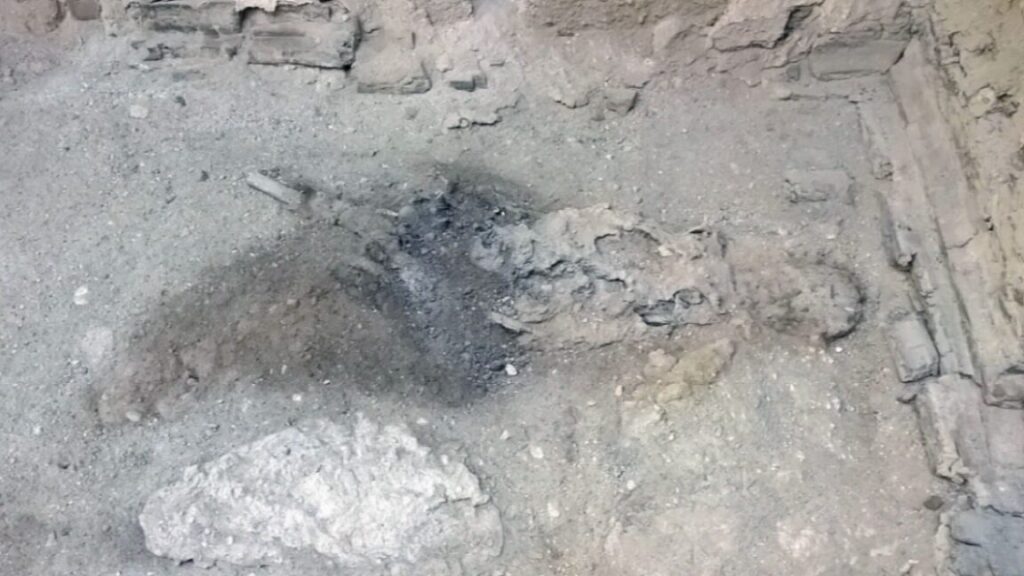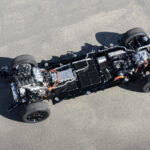According to Petrone et al., usually such brain matter would be “saponified” by the extreme heat—that is, turned to soap (glycerol and fatty acids). But this particular victim’s brain matter had been vitrified, i.e., fused into glass. Petrone et al. estimated that temperatures could have been as high as 520° Celsius (984° Fahrenheit) based on evidence gleaned from charred wood at the site.
V is for vitrification
Pier Paolo Petrone
A fragment of the organic glass found inside the skull of the deceased individual in Herculaneum.
Pier Paolo Petrone
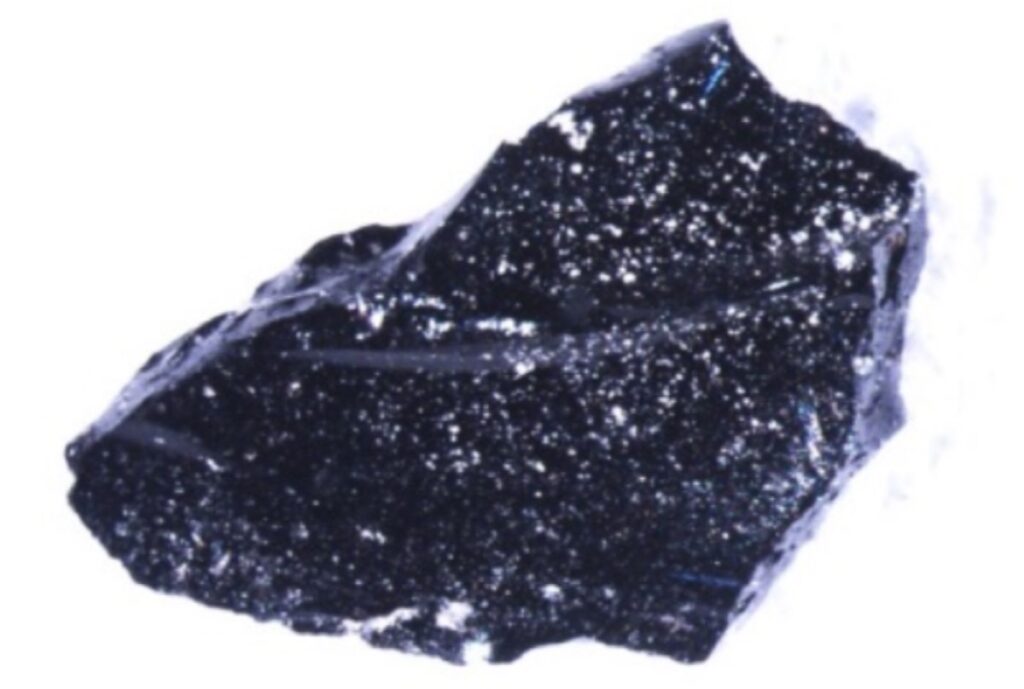
Guido Giordano et al./Scientific Reports, 2025
A sample of the organic glass under direct light.
Guido Giordano et al./Scientific Reports, 2025
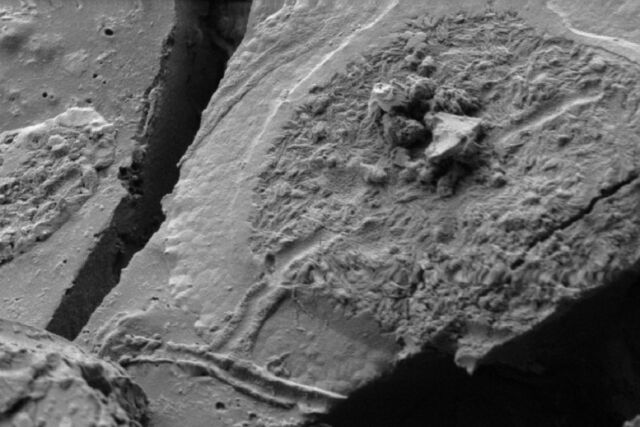
Pier Paolo Patrone
Using scanning electron microscopy (SEM), forensic archaeologists found evidence of human neurons in 2020.
Pier Paolo Patrone
A sample of the organic glass under direct light.
Guido Giordano et al./Scientific Reports, 2025
Using scanning electron microscopy (SEM), forensic archaeologists found evidence of human neurons in 2020.
Pier Paolo Patrone
Later that same year, Petrone struck again, claiming the discovery of preserved human neurons in the victim with the “glassified” brain. He looked at the genetic expression of previously identified proteins and also included the results of using scanning electron microscopy (SEM) to image vitrified brain and spinal cord remains. They found that the images revealed distinctive features typical of the human central nervous system, including evidence for neurons and white matter axons.
Brain tissue does sometimes preserve; there are around 1,300 samples worldwide dating back to the mid-16th and mid-17th centuries. But the Vesuvian preserved brain studied by Petrone et al. is both very old (although not the oldest) and unusual in terms of the hypothesis proposed about the precise mechanism by which it was preserved. Another 2020 paper documented the preservation of neurocytoarchitecture in a 2,600-year-old Iron Age human skull excavated in Heslington, York, albeit via a different mechanism than the vitrification claimed by Petrone et al.
So this claim was met with some skepticism by others in the archaeological community, particularly since the raw data was not available. An alternative theory is that the victims at Herculaneum may have been essentially “baked” by lower-intensity heat, like roasting a joint in the oven.
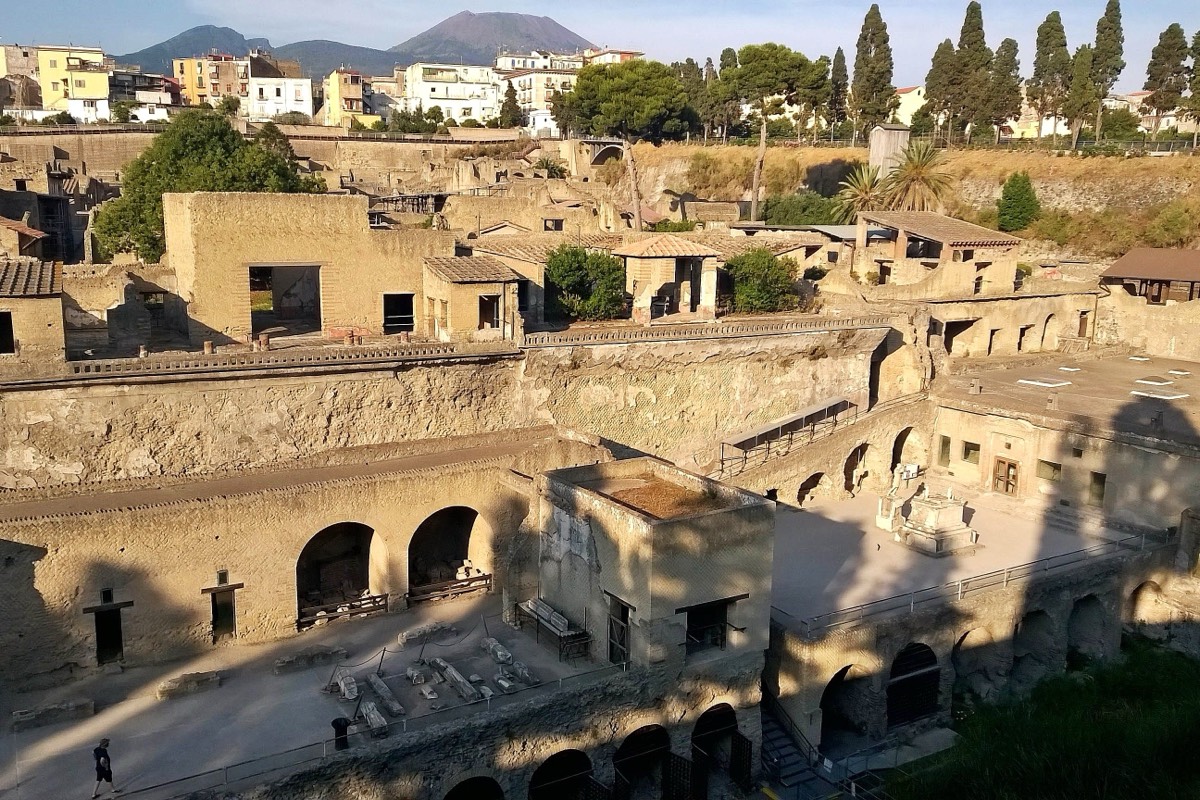
Pier Paolo Petrone
The archaeological site of Herculaneum, with Mount Vesuvius visible in the background.
Pier Paolo Petrone
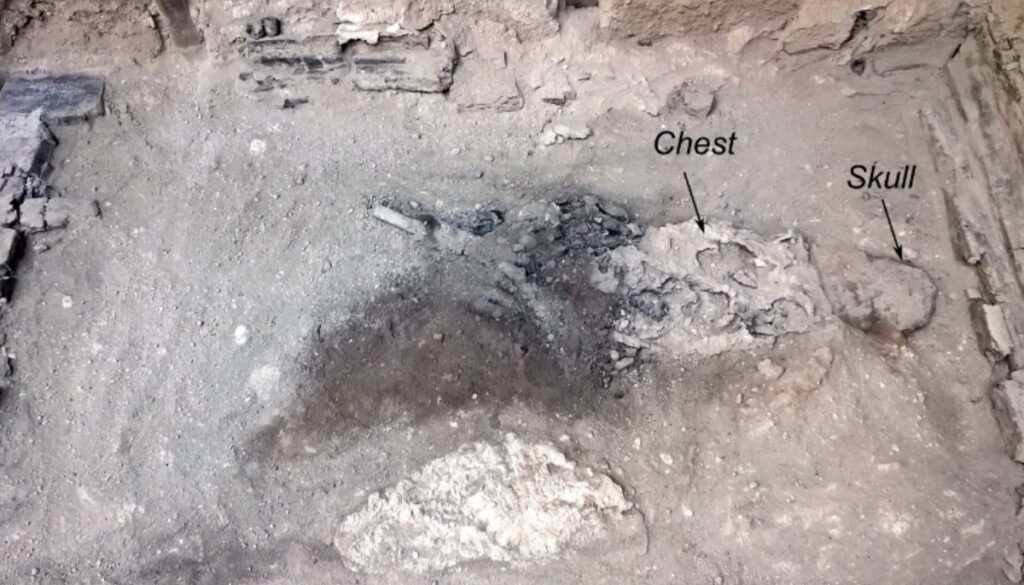
Guido Giordano et al./Scientific Reports, 2025
Annotated image of the remains of the deceased individual in situ in their bed in the Collegium Augustalium.
Guido Giordano et al./Scientific Reports, 2025
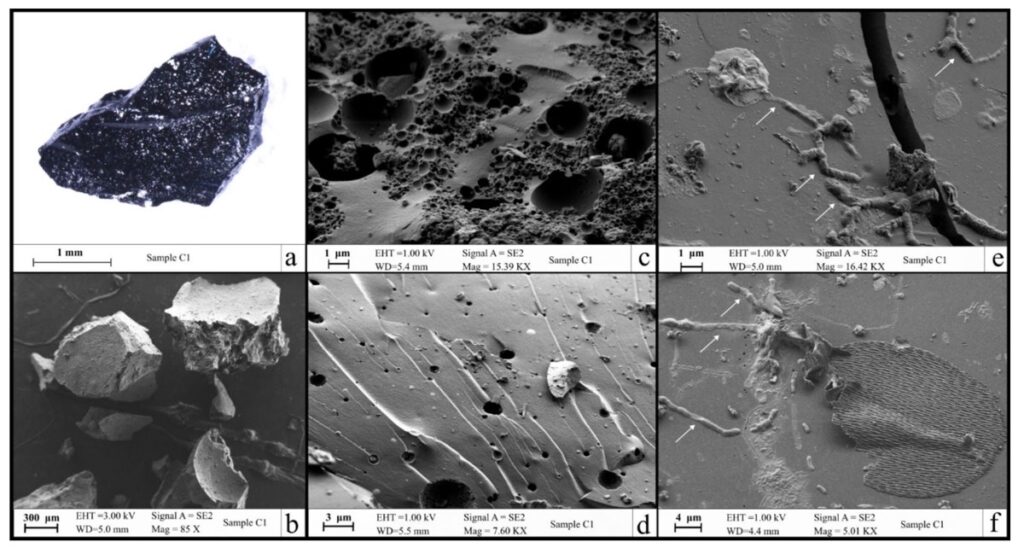
Guido Giordano et al./Scientific Reports, 2025
FE-SEM images of brain samples shown at different magnifications.
Guido Giordano et al./Scientific Reports, 2025
Annotated image of the remains of the deceased individual in situ in their bed in the Collegium Augustalium.
Guido Giordano et al./Scientific Reports, 2025
FE-SEM images of brain samples shown at different magnifications.
Guido Giordano et al./Scientific Reports, 2025
Now Petrone, Guido Giordano of the University of Roma Tre, and several other colleagues are back with a fresh analysis using various techniques to investigate the specific properties of samples taken from the glass-like material: field emission scanning electron microscopy, 3D scanning tomography, Raman spectroscopy, energy dispersive X-ray spectroscopy, and differential scanning calorimetry.
